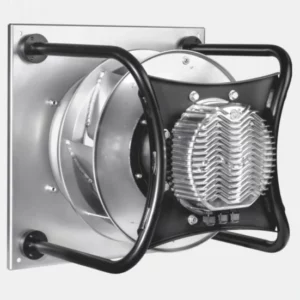Introduction
Choosing the right plug fan is crucial for ensuring efficient and effective airflow in various applications. Plug fans, also known as cabinet fans or plenum fans, are commonly used in HVAC systems, industrial processes, and ventilation systems. This article serves as a comprehensive guide to help you navigate the plug fan selection process, taking into account important factors such as airflow requirements, static pressure, space constraints, fan types, efficiency, noise levels, and industry guidelines.
Here are a few examples:.
Determine Airflow Requirements
Start by calculating or estimating the required airflow for your application. Consider factors such as the size of the space, desired air changes per hour, or specific ventilation requirements. Accurate airflow calculations are essential for selecting a plug fan that can deliver the necessary air volume.
Assess Pressure Requirements
Identify the static pressure requirements of your system. Static pressure refers to the resistance to airflow caused by ductwork, filters, grilles, or other components. It is crucial to select a plug fan that can deliver the required airflow against the system’s static pressure. Consult system specifications or consult with a professional engineer if necessary.
Consider Space and Installation Constraints
Evaluate the available space for installing the plug fan. Measure dimensions and consider any constraints such as height, width, and depth limitations. This step ensures that the selected plug fan will fit within the allocated space without hindering installation or maintenance access.
Select the Fan Type
Plug fans are available in different configurations, including backward curved, forward curved, and axial designs. Each type has its advantages and disadvantages. Consider factors such as efficiency, noise levels, and the ability to handle different airflow conditions. Additionally, check industry guidelines or specific regulations that may dictate the type of fan required for your application.
Calculate Fan Size
Use the determined airflow and static pressure requirements to select an appropriately sized plug fan. Consult the manufacturer’s performance data or use fan selection software to identify suitable plug fan sizes. The manufacturer’s data typically includes fan performance curves illustrating the relationship between airflow, static pressure, and fan speed. Choose a plug fan size that meets your airflow and pressure requirements while operating within its optimal performance range.
Consider Fan Efficiency
Energy efficiency is an important consideration when selecting a plug fan. Look for fans that are designed for high efficiency, as they can help reduce energy consumption and operating costs. Efficient plug fans often feature advanced motor technologies, optimized blade designs, and variable speed control options. Consult manufacturer specifications and energy efficiency ratings to make an informed decision.
Evaluate Noise Levels
If noise is a concern in your application, consider the noise levels generated by the plug fan. Manufacturers usually provide noise data in their product specifications. Select a plug fan that meets the noise requirements of your application or consider additional noise attenuation measures, such as adding silencers or acoustic enclosures.
Consult Manufacturer and Industry Guidelines
Reach out to manufacturers or consult industry guidelines for specific recommendations related to your application. Manufacturers can provide technical support and guidance to help you select the most suitable plug fan for your requirements. Additionally, industry guidelines or standards may offer specific requirements or recommendations for certain applications, ensuring compliance and optimal performance.
Are there any specific industry guidelines or standards that I should be aware of for plug fan selection?
There are specific industry guidelines and standards that you should be aware of when selecting plug fans.These guidelines provide recommendations and requirements for various applications and ensure the fans’ performance, safety, and compliance.
- Air Movement and Control Association (AMCA) Standards: AMCA is an international organization that develops standards and guidelines for air systems, including fans. The AMCA has standards such as AMCA 201, “Fans and Systems” and AMCA 210, “Laboratory Methods of Testing Fans for Certified Aerodynamic Performance Rating.” These standards provide performance testing methods, rating procedures, and guidelines for fan selection and application.
- ASHRAE Handbooks: The American Society of Heating, Refrigerating, and Air-Conditioning Engineers (ASHRAE) publishes handbooks that offer comprehensive guidance on HVAC systems and equipment. ASHRAE Handbook chapters related to fans and ventilation, such as the “HVAC Systems and Equipment” and “Fundamentals” volumes, provide valuable information on fan selection, system design, and performance considerations.
- National Fire Protection Association (NFPA) Standards: NFPA develops codes and standards related to fire protection and safety. For applications where fire safety is a concern, such as in commercial kitchens or industrial processes, NFPA standards such as NFPA 96, “Standard for Ventilation Control and Fire Protection of Commercial Cooking Operations,” may provide specific requirements for fan selection and installation.
- International Organization for Standardization (ISO) Standards: ISO develops international standards for various industries. ISO 13347-3, “Industrial Fans – Determination of Fan Sound Power Levels under Laboratory Conditions,” provides guidelines for testing and rating fan sound power levels. This standard can be useful when evaluating the noise characteristics of plug fans in noise-sensitive applications.
- Building Codes and Regulations: Depending on your location and the application, local building codes and regulations may dictate specific requirements for fan selection and installation. These codes can address factors such as fire safety, ventilation rates, noise limits, and energy efficiency. Consult local building authorities or relevant codes, such as the International Building Code (IBC) or local mechanical codes, for specific guidelines and requirements.
Conclusion
Selecting the right plug fan involves careful consideration of various factors, including airflow requirements,plug fan selection static pressure, space constraints, fan type, efficiency, noise levels, and industry guidelines. By following the steps outlined in this comprehensive guide, you can make an informed decision and choose a plug fan that provides optimal airflow performance, energy efficiency, and meets the specific needs of your application.

